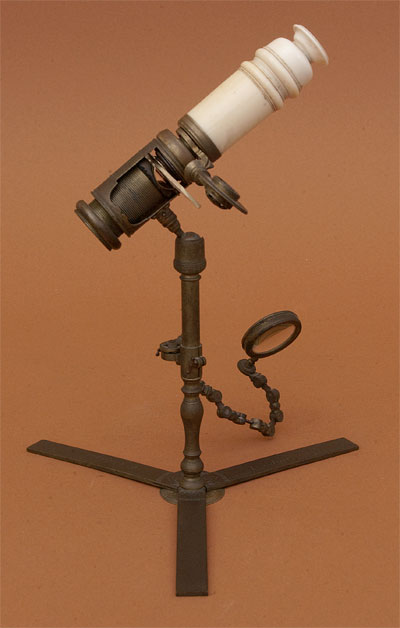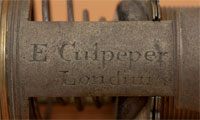This is a fine example of an early Edmund Culpeper Screwbarrel microscope with an ivory "Double Microscope" attachment. The microscope body is supported on a modified surveyor's sector to form a brass tripod stand, attached to which is a bullseye lens on an articulated arm. The microscope is engraved in two places (the body tube and support legs) with "E Culpeper Londini". The compound attachment consists of two components: the body with an attached brass threaded collar plus low-magnification lens, and an internal ivory drawtube with the eye lens. This compound lens system screws into the screwbarrel component, which then acts only as a sample holder. With the compound assembly removed, an objective lens can be screwed into the brass body making the system a conventional simple magnifier. Six objective lenses were supplied originally with the microscope, however only five remain. The screwbarrel body has three sample pressure plates: two flat plates for supporting mounted specimens and a third cupped plate for supporting glass phials. A leather cushion is glued to the screwbarrel of the cupped plate to act as a bearing surface when focusing the sample. Sample illumination is provided by a free-standing gimbaled mirror, predicting its appearance on Culpeper's more famous tripod microscopes of the 1730s. The microscope comes with a black ray-skin storage case. A single bone slide remains with this instrument. The assembled microscope is 24cm tall.
Edmund Culpeper is one of the most famous microscope makers of the early 18th Century. He is most known for creating beautiful tripod microscopes, and is credited for inventing the gimbaled sample illuminating mirror.
Featured 07/2011, 01/2016, 09/2020, 12/2024







